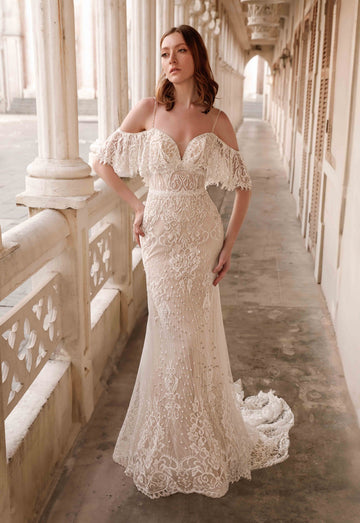Tracing Bridal Trends Through Time: A Journey Through Wedding Fashion History
Tracing Bridal Trends Through Time: A Journey Through Wedding Fashion History
The world of weddings is a captivating blend of tradition, culture, and modernity. Over the years, bridal trends have evolved, reflecting societal shifts and artistic innovations. In this article, we will explore how wedding fashion has transformed, from vintage gowns to contemporary designs, offering insights into the various trends that have marked each era.
The Evolution of Bridal Fashion
Wedding gowns have a rich history that dates back centuries. Each time period brings its own unique styles and inspirations, ranging from the opulent dresses of royal weddings to the simple yet elegant looks favored by modern brides. Here, we delve into significant bridal trends from different eras.
1. The Victorian Era (1837-1901)
During the Victorian Era, bridal gowns underwent a transformation. Queen Victoria's marriage to Prince Albert in 1840 set the tone for modern bridal wear by popularizing the white wedding dress. Before this, brides typically wore their best dresses, which could be of any color. The Victorian style was characterized by:
- Elaborate lace and embroidery
- Long trains and veils
- Full skirts supported by crinolines
Key Elements of Victorian Bridal Fashion
| Feature | Description |
| Color | Predominantly white or cream |
| Silhouette | Bustle and full skirts |
| Materials | Lace, silk, and satin |

2. The Roaring Twenties (1920s)
The 1920s ushered in a period of liberation, reflected in the more relaxed wedding styles. Brides began to embrace the glamour and excess of the Jazz Age. Bridal fashion saw a shift towards:
- Slimmer silhouettes with dropped waists
- Art Deco embellishments and bold beadwork
- Shorter dresses and flapper-style looks
Iconic Elements of 1920s Bridal Trends
| Feature | Description |
| Length | Tea-length and knee-length dresses |
| Designs | Geometric patterns with sequins |
| Accessories | Pearl necklaces and feathered headbands |
3. The Glamorous 1950s
The 1950s brought a return to more feminine and romantic silhouettes. This era was marked by high-profile celebrity weddings, such as Grace Kelly's, which further influenced bridal fashion. Key characteristics included:
- A-line dresses with fitted bodices
- Full skirts with petticoats
- Classic lace veils
Brides in this decade favored traditional elements while incorporating personal touches. The use of pastel colors became more prevalent, allowing for a broader palette beyond the classic white.
The 1950s Bridal Style Summary
| Feature | Description |
| Silhouette | A-line with a cinched waist |
| Fabrics | Taffeta, chiffon, and lace |
| Accessories | Birdcage veils and elegant gloves |
4. The Counterculture 1960s and 70s
The 1960s and 70s were characterized by a break from tradition, with many brides opting for bohemian styles and less formal attire. The emphasis was on individuality and personal expression. Features included:
- Floral and unconventional patterns
- Shorter hemlines and bell sleeves
- Unique materials such as cotton and linen
Highlights of 1960s and 70s Bridal Trends
| Feature | Description |
| Style | Bohemian and relaxed |
| Colors | Bright and vibrant hues |
| Accessories | Flower crowns and layered jewelry |
5. The Modern Era (1980s-Present)
The modern era has seen bridal fashion continually evolving with technology and changing cultural norms. The 1980s were known for dramatic silhouettes, while contemporary brides often seek a mixture of classic and modern designs. Today’s trends include:
- Sustainable and eco-friendly materials
- Customization and personalization
- Incorporation of cultural elements
Trends in Contemporary Bridal Fashion
| Feature | Description |
| Sustainable Fashion | Use of eco-friendly fabrics |
| Unique Designs | Custom gowns reflecting personal style |
| Inclusivity | Bridal wear for all body types |
Conclusion: Embracing the Past While Looking to the Future
As we trace bridal trends through time, it’s clear that wedding fashion reflects cultural and societal shifts. Each era has left its mark, influencing contemporary designs while also celebrating tradition. When choosing a bridal style today, brides can draw inspiration from the past while also focusing on modern elements like sustainability and personalization.
In summary, understanding the progression of bridal trends can inform and inspire brides as they prepare for their special day. Whether you are drawn to the timeless elegance of the Victorian era or the free-spirited designs of the 1970s, there is beauty in embracing the diverse history of wedding fashion.
**Note:** When planning your wedding attire, consider both fashionable trends and personal style preferences, ensuring that your selection feels authentic to you. Your wedding day should reflect not only the latest styles but also your unique journey as a couple.
